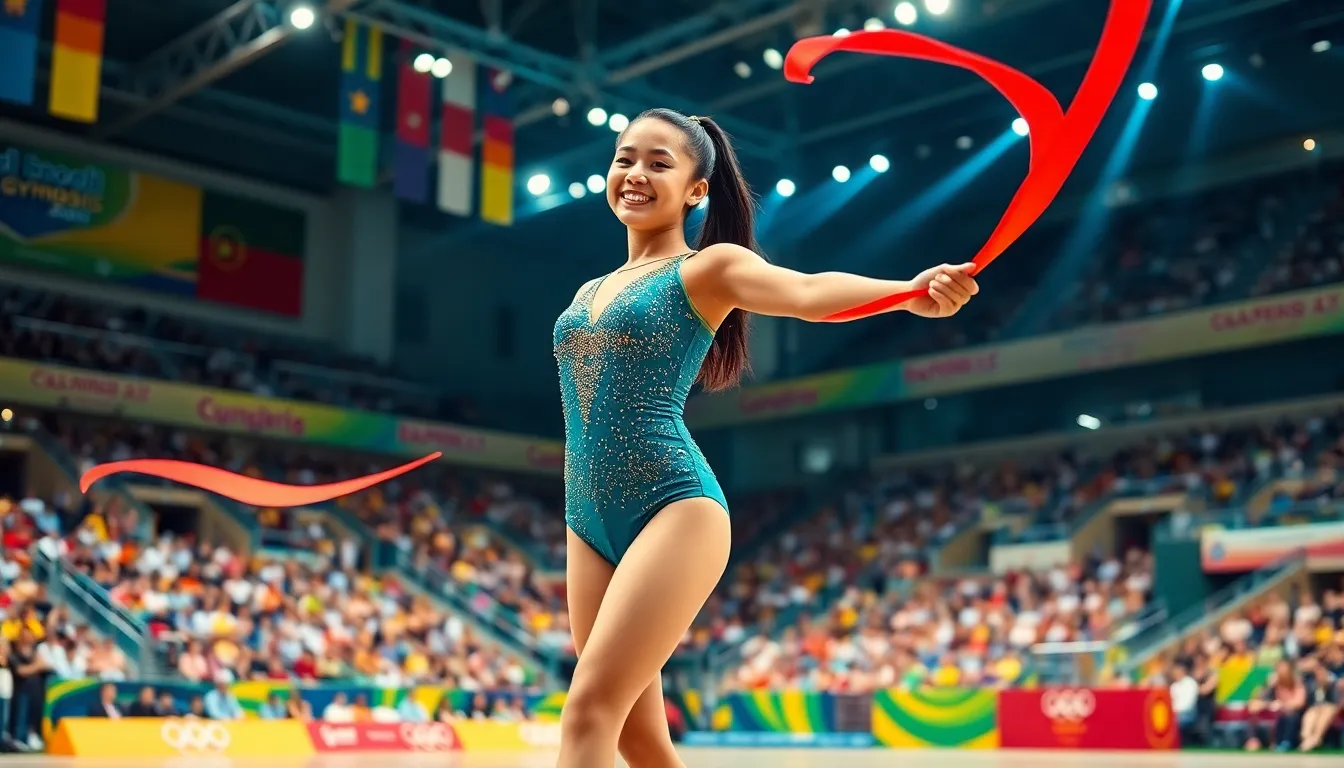Rhythmic gymnastics is an enchanting blend of grace, artistry, and athleticism, captivating audiences around the world. This visually stunning sport, characterized by its use of apparatus such as ribbons, hoops, and balls, has undergone significant evolution over the years. As we jump into the latest buzz surrounding rhythmic gymnastics, we’ll explore its history, key competitions happening in 2025, standout athletes making headlines, and what the future holds for this dynamic discipline.
Table of Contents
ToggleOverview of Rhythmic Gymnastics

History and Evolution of the Sport
Rhythmic gymnastics originated in the late 19th century as a means for women to develop grace and coordination. Initially practiced as part of physical education, it gained momentum throughout the early 20th century, culminating in its inclusion in the Olympic Games for women in 1984. Over the decades, the sport has evolved to emphasize a more artistic expression of movement while maintaining its core athletic principles. This transformation reflects broader societal changes about women in sports, showing a significant leap not only in competitive standards but also in the recognition of rhythmic gymnastics as a legitimate athletic pursuit.
Key Elements of Rhythmic Gymnastics
Central to rhythmic gymnastics are its five apparatus: ribbon, hoop, ball, clubs, and rope. Each piece of equipment contributes a unique aspect to routines, requiring gymnasts to master various skills such as flexibility, coordination, and timing. Competitors perform choreographed routines that combine dance and acrobatics, all while gracefully maneuvering their apparatus. Judges score performances based on difficulty, execution, and artistic impression, making the balance of these elements critical for success.
Recent Competitions and Highlights
Major Events in 2025
As rhythmic gymnastics continues to thrive, several key competitions have made waves in 2025. The World Championships held in Baku showcased high-level talent, with countries like Russia and Bulgaria dominating the podiums. This event not only set the stage for emerging gymnastic stars but also featured seasoned athletes aiming to solidify their legacies ahead of the upcoming Olympic Games.
Standout Performers and Their Achievements
Among the stars of 2025, Anna Kovalchuk from Russia garnered significant attention, clinching gold in multiple apparatus events. Her innovative routines and exceptional execution impressed judges and spectators alike. Also, Sofia Valova from Bulgaria demonstrated remarkable versatility, earning medals across all five apparatuses, a feat that confirms her status as one of the sport’s rising stars. Both athletes have set new benchmarks in rhythmic gymnastics, embodying the hard work and dedication required to excel.
Upcoming Competitions to Watch
Analysis of Training Regimens
The preparations for major competitions like the Tokyo Olympics in 2025 underscore the rigorous training regimens athletes follow. Top gymnasts typically undergo intense daily practices that can last up to six hours, incorporating a mix of flexibility training, choreography, and apparatus drills. Coaches carry out advanced techniques to enhance performance, often tailoring workouts to address individual strengths and weaknesses.
Technological Advances in Coaching
Innovations in technology have significantly impacted coaching techniques, providing athletes with analytical tools to refine their routines. Video analysis software allows gymnasts to review performances in detail, identifying areas for improvement. Also, wearable technology tracks physical metrics, ensuring athletes maintain their fitness levels and reduce injury risks. These advancements play a crucial role in preparing gymnasts for the intense demands of competition.
The Future of Rhythmic Gymnastics
Growing Popularity Worldwide
The global landscape for rhythmic gymnastics is evolving, with increasing participation rates among young athletes worldwide. Countries in Europe, Asia, and even Africa are investing more in training programs, fostering the next generation of talents. This growing interest is reflected in an uptick in viewership during major competitions, highlighting rhythmic gymnastics as a compelling spectator sport.
Challenges Facing Athletes and Organizers
But, the sport is not without its challenges. Athletes often face intense pressure due to the demand for excellence, which can lead to physical and mental strain. Also, organizers of competitions must navigate logistical hurdles, such as securing funding and ensuring fair judging practices. These challenges underscore the need for a supportive infrastructure to sustain the growth and integrity of rhythmic gymnastics.
Conclusion
Rhythmic gymnastics is on an exciting trajectory, intertwining tradition with modernity. As the sport garners attention and participation worldwide, athletes are pushing the boundaries of what is possible, demonstrating extraordinary talent and dedication. With the upcoming competitions set to showcase these capabilities, the rhythmic gymnastics world is ready for an exhilarating future, promising not just spectacular performances, but also an ever-expanding audience eager to witness this beautiful sport.


